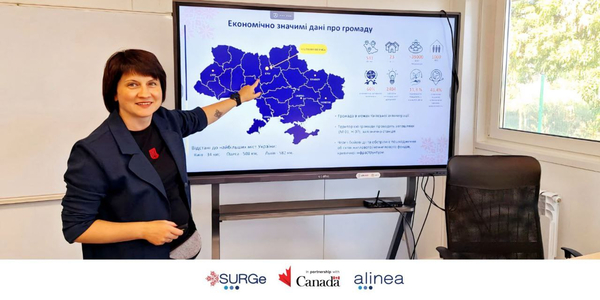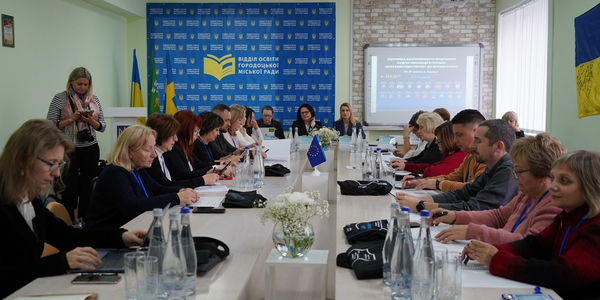
Proper recovery planning is the key to the sustainable development of territories. That is why the USAID HOVERLA Activity has been consistently supporting the Ministry of Community, Territorial and Infrastructure Development of Ukraine in developing documents and processes related to spatial planning. Comprehensive plans for community spatial development are designed to organize the plans of local governments into specific projects and facilities. Such a vision will allow local governments to understand what the future will look like, and the Government will see what kind of funding assistance is needed to help communities, and donors will see how the community will develop and what investments are needed.
Therefore, the USAID HOVERLA Activity has started implementing grants to develop comprehensive spatial development plans for the Shatsk territorial community of Volyn Oblast and the Kipti territorial community of Chernihiv Oblast.
Today, the Kipti territorial community of Chernihiv region needs support to rebuild the territories damaged by shelling by the Russian Federation. Therefore, the comprehensive plan will contribute to the restoration of the community, as it was destroyed during the full-scale invasion.
"The spatial plan of the Kipti community will cover all settlements along with roads and power lines. This is a large, powerful project. This is a big plus for the community. Without such a plan, we will not be able to build anything, change the layout of the settlement, and most importantly, it is impossible to restore the destroyed or develop without it. Yes, while active hostilities, shelling and bombing continue, it is too early to talk about large-scale recovery, but I am sure that this time will come, and we will need such a plan," comments Volodymyr Kuchma, head of the Kipti community.
With its unique natural recreational potential, rich land resources, and cross-border location, the Shatsk territorial community has long been in need of a comprehensive planning strategic document. When applying for selection to the USAID HOVERLA Activity, the community team identified this need as a priority.
"Since the beginning of Russia's full-scale invasion, our community has faced new challenges: restrictions on economic activity in the border areas, loss of transit potential and the termination of two checkpoints with Belarus, and a decline in the community's economy. Therefore, together with the experts of the USAID HOVERLA Activity, we worked through all these issues and slightly adjusted the terms of reference for the development of the planning document. I am convinced that the development of a Comprehensive Spatial Development Plan is a prospect of well-being, a chance for economic growth and a decent life. That is why the team of the Shatsk Settlement Council will make every effort to win the fight for a better future together with the USAID HOVERLA Activity!" comments Bohdan Tymoshchuk, Secretary of the Shatsk Council.
The comprehensive plan for spatial development of the territory for each of the two communities will become urban planning documentation at the local level. The plan is also a land management document that will determine the planning organization, functional purpose of the territory, basic principles and directions for the formation of a unified system of public services, road network, engineering and transport infrastructure, engineering training and improvement, civil protection, protection of land and other environmental components, formation of an ecological network, protection and preservation of cultural heritage and the traditional character of the environment of settlements, as well as the sequence of implementation of
Comprehensive plans for the Kipti and Shatsk communities are expected to be finalized by the end of 2025. In addition, The USAID HOVERLA Activity aims to continue supporting the development of spatial plans for other communities. These documents are key for territorial communities as they promote sustainable economic development and growth, enable informed decision-making for the well-being of the community, and ensure transparency and accountability of local governments.







